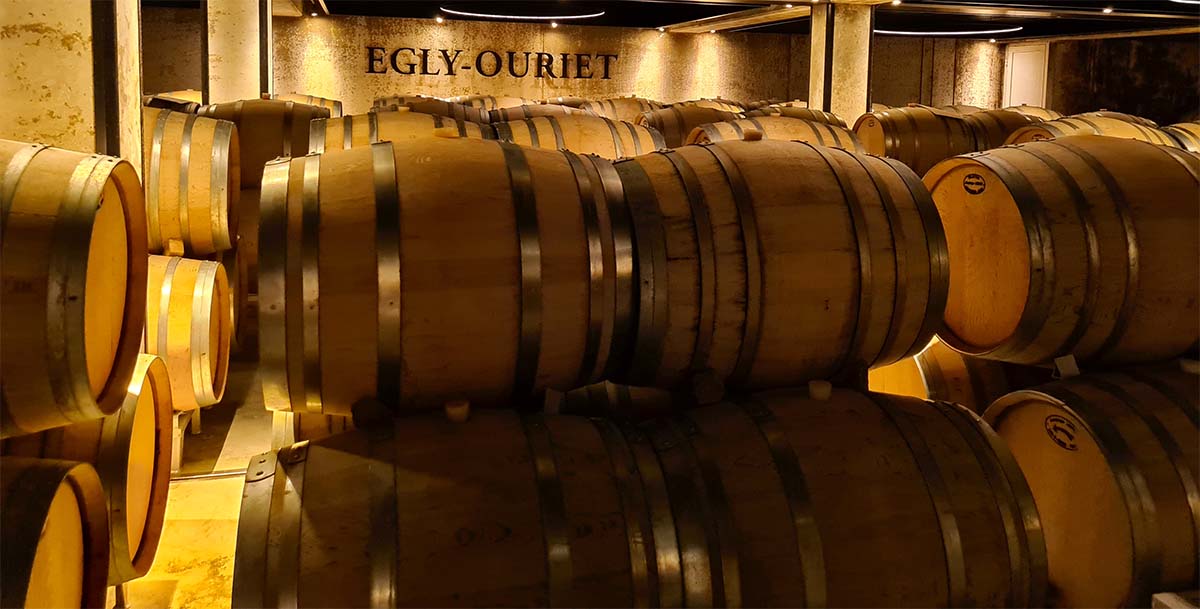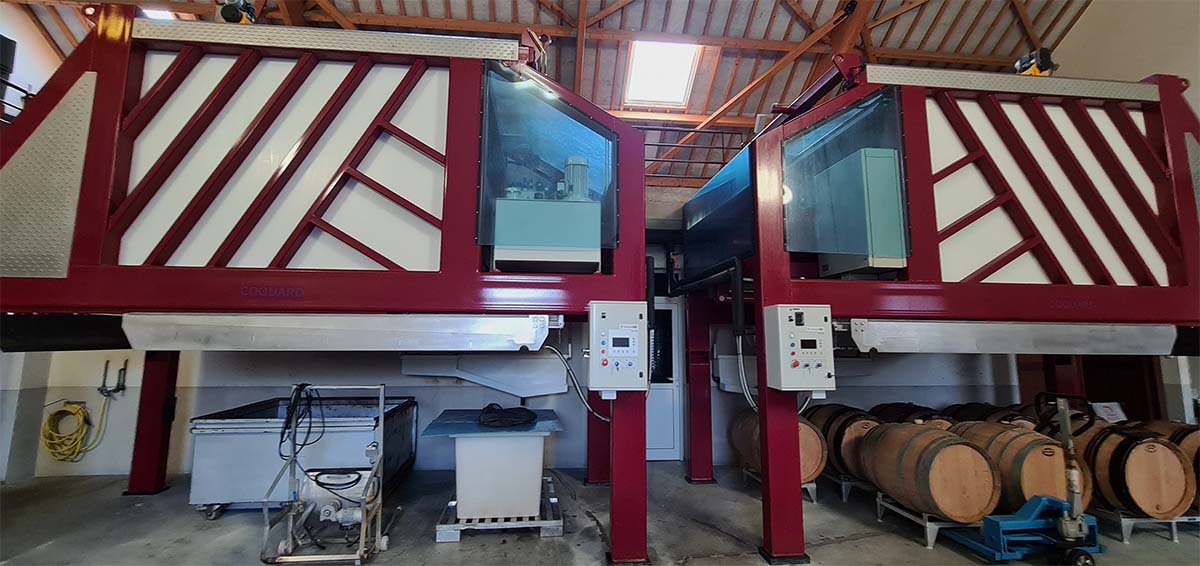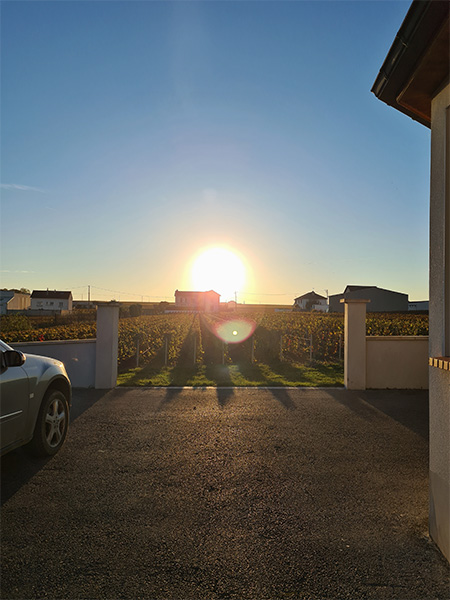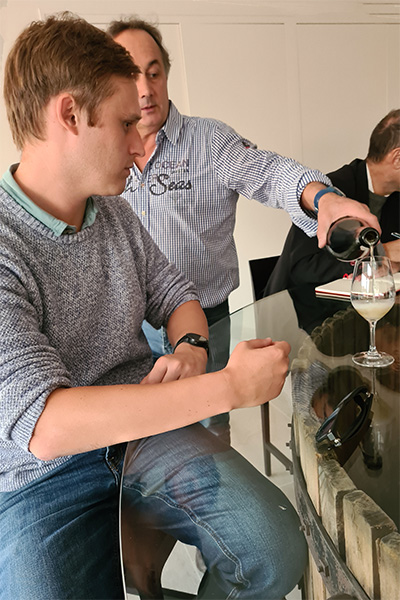
Grower Champagne is now firmly established as a source of great, individual wines that offer something different to the grandes marques that have dominated sales and production in the region for so long. The concept of owning, farming and then making wine is not a stretch in most regions (and, indeed, many of the larger houses in Champagne own at least some vineyards from which they make wine), but the focus on quality of fruit and effort in the vineyard to produce high quality sparkling wine is the essence of these wines. In a recent visit to Egly-Ouriet, it was possible to see just how much work Francis Egly has put into every aspect of his wines, resulting in a recent 100-point score for his magnificent 2008 Millésime. I drank this wine recently in Spain, and it is an absolutely stunning offering, well worth its perfect score with ample richness to match the hallmark ’08 acidic tension. A profound champagne worthy of patience in the cellar.

Francis Egly is a busy man – our visit was in the late afternoon with the setting sun. He was out working during the day and had a meeting with several other prominent growers in the evening. We arrive slightly early and while waiting we talk with his daughter Clémence (who works with him) next to the vineyards. The fruit is in for 2021 and, like so much of France, yields are down as a result of such a difficult growing season. Yields are always very low at Egly-Ouriet compared to the average in Champagne. The vines are immaculate, and it is immediately clear the advantage they have in working their own vines in vintages such as this. They are, on average, between 40 and 50 years old and the quality of fruit will not be in doubt in 2021, even if it is scarce. There are roughly 10 hectares in total in production. Later, I asked Francis the benefits of owning vineyards and he led with the difficulties it creates. They have roughly one full-time member of staff per hectare - a significant cost - and must deal with the significant issues of frost, hail and rain in this part of France. The vineyards are worked mechanically and not with herbicides, requiring more time in the vineyard. The rewards, however, are clearly worth the time and expense.
Once Francis arrives, we go straight into the winery, and spend significant time discussing the importance of the press when it comes to Champagne. In 2008 they procured two Coquard presses, a significant outlay for the production size, in order to better control the juice extracted from the fruit. Time, pressure, and timing are so important for the vins clairs produced for Champagne. Francis clearly believes the additions of these presses were instrumental in the quality of the magnificent 2008 Millésime, and all wines produced since their arrival. Several years later two cooling plates were added – again at significant cost – to further improve quality. Part of the problem with climate change is that earlier harvest dates mean picking in warmer temperatures. Fruit can easily come in at high temperatures, which can lead to a rapid start to fermentation with a potential loss of nuances of fruit. These plates reduce the temperature of the juice by 10 degrees Celsius. It allows full control over the start of fermentation, and then the pace at which it continues. With so much fruit often coming in at once, this is a great advantage when refining the details of each wine.

The winery works over multiple levels – the press on the ground floor along with tanks used for some fermentations. Below is the barrel cellar – Egly Ouriet’s wines are largely fermented and matured on lees in high quality barriques of up to five years’ age. Francis knows where each plot and variety sits in the barrel cellar, ready to be blended before secondary fermentation in bottle yet another floor down. Everything works in order at the winery – at each step the wine descends further underground, only re-emerging on the surface once the bottles are prepared for imminent shipping. It is a clear philosophy of precision, logic and control that forms every part of the process here. Many of the wines undergo significant ageing in bottle before disgorgement – there are roughly 800,000 bottles, nearly eight years’ production, lying deep underground at the property.
Returning up to the tasting room, we taste through the latest range from Egly and engage in a quite vigorous discussion on style, quality and winemaking practices for each bottling, as well as inevitable vintage variations. The notes for these wines are below. As Francis pours the 2012 Millésime (another outstanding effort) none other than Anselme Selosse wanders in through the front door; he is one of the attendees at the aforementioned meeting that should already be underway. We have taken up much more of Francis’ time than intended and it is already evening. So, we make our thanks with the brilliant 2012 still lingering on our palettes and drive back to Reims through now dark vineyards. The wines of Egly Ouriet are some of the best in the region, and after speaking the with Egly family it is evident this has been achieved through hard work and an insatiable drive to improve. They are precise and yet incredibly moreish wines that should be bought with supreme confidence, if you can find them!

Egly Ouriet Vignes de Vrigny (2017 base)
100% Pinot Meunier and 100% premier cru vineyards. 2017 base vintage, with a minimum four years of ageing before release.
Lightly golden colour. Honeyed with tarte tatin on the nose which is very vinous. Perhaps advancing faster than some other iterations of this wine, it is rich and generous, with waxy honeysuckle character and fleshy stone fruits. Bright acidity retains a backbone throughout; hints of ginger and saffron only add to the moreish approachability here.
Egly Ouriet Brut Tradition (2016 base)
70% Pinot Noir, 30% Chardonnay. From 100% grand cru vineyards and 100% aged in barrel. 1g/l dosage.
Pale straw colour with a quite vigorous mousse. This is pure, fine and steely. There is a hint of rounded white strawberry but this is a wine of drive and finesse. The palate is floral, with a persistent and creamy mousse. There is a lightly honeyed character but the impression remains savoury. This has deep drive and a lipsmacking, moreish finish. Excellent.
Egly Ouriet Brut Rosé (2016 base)
Following the blend of the Brut Tradition with a 5% addition of red wine.
Rose gold colour. The aromatics are similar to the Brut Tradition but, perhaps led by the colour, have a slightly more prominent white strawberry tone that brings with it a hint of redcurrant. Creamy and generous on the palate, it feels rounder than the Tradition, with a light smokiness that only adds to the rounded feel here. Slightly pithy on the finish, this is an excellent rosé with a delicate touch.
Egly Ouriet VP Extra Brut (2012 base)
Bottled for secondary fermentation in 2014. Disgorged in 2021 after 7 years maturation in the cellar. All grand cru vineyards. VP stands for Vieillisement Prolongé (extended ageing).
Very pale straw colour - there is a brightness to this wine even in colour. This follows on the nose, which shows pristine Anjou pear, baked vanilla and grilled peach. This is matched by a strong note of fresh brioche and bread. The palate is more focused on the fruit, it is very bright with a wonderful transparency - it is weightlessly intense and the mousse though creamy feels incredibly delicate. Very youthful, with pristine green and white fruits, this should evolve into an outstanding mature Champagne, though it is hard to resist already!
Egly Ouriet Blanc de Noirs VV
100% Pinot Noir from the Crayères parcel. A blend of 2013 and 2014, disgorged this year after 62 months ageing on the lees.
Vibrant straw colour. Smoky, creamy fruit on the nose, this has notes reminiscent of grand cru white Burgundy - flinty tension, generous spice and pure, intense citrus fruit. Waves of toast and fresh brioche come with air, hinting at the extended lees ageing. The palate is powerful with a rounded mouthfeel that is expected of a Blanc de Noirs, yet there is real energy to the concentrated, ripe fruit. Despite the rich autolytic character the fruit shines through together with a creamy, bold mousse. Mandarin and struck match character come together with beeswax and wood smoke. A muscular wine full of potential.
Egly Ouriet Brut Millesime 2012
70% Pinot Noir, 30% Chardonnay. 2g/l dosage after extended lees ageing (it was only recently disgorged).
Pale straw colour. Lime oil, mandarin pith and hints of white strawberry come together with light baking spices and hints of all-butter pastry. The palate is rich and incredibly powerful, bordering full-bodied with a generous, mouthfilling mousse. The density here warrants significant bottle age to reach its peak, but it is delicious already. Precise stone fruit and citrus pith move in tandem with generous buttered bread notes and sweeter beeswax and honey. As the mousse settles, there is an increasing pithy texture to the finish. It is long, incredibly intense and very fine. In the style of the 2008, this an incredible wine. Buy it if you can find it!